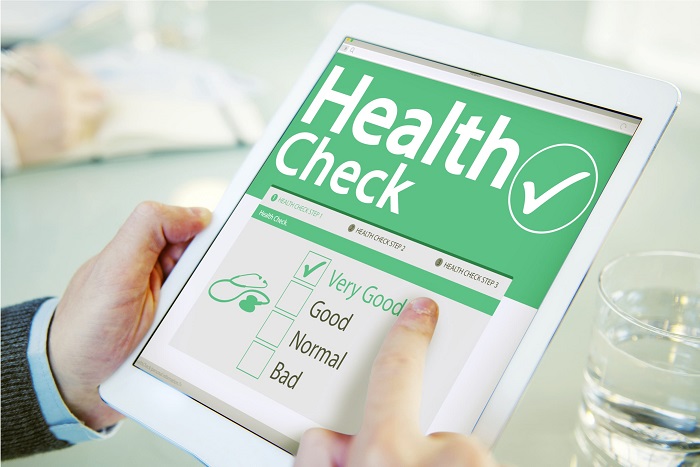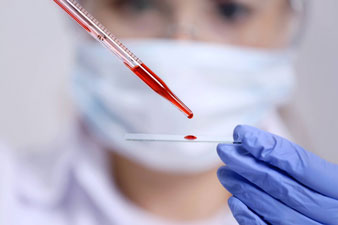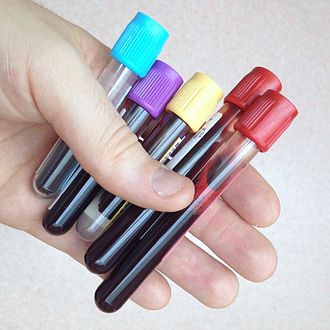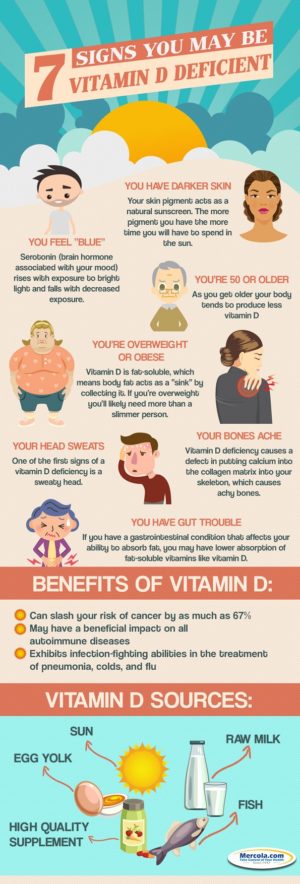70% Of Medical Decisions Are Based On Lab Results

STORY AT-A-GLANCE:
- While studies suggest the health of Americans suffers due to excessive, unnecessary and/or ineffective medical tests and treatments, certain lab tests can offer truly important clues about your health
- Some of the most valuable tests are rarely ordered by conventional physicians. These include the omega-3 index, ferritin, RBC magnesium, homocysteine and LDL particle number
- Other important lab tests include vitamin D, fasting insulin and C-reactive protein
- You may also consider doing a GGT test. Not only will it tell you if you have liver damage, it’s also an excellent marker for excess free iron and is a great indicator of your sudden cardiac death risk
- As of 2014, individuals (or a person designated by the patient) have the right to gain direct access to their laboratory test reports without having to have them sent to a physician first
Many of us are proactive with our own health these days, and that is a good thing. Knowing the data within your body, the same data that doctors use to make treatment and medical decisions, is important. If you are looking to take control of your own health there blood testing labs that can help you.
By Dr. Mercola:
While studies suggest the health of Americans suffers due to excessive, unnecessary and/or ineffective medical tests and treatments, certain lab tests can offer truly important clues about your health. Unfortunately, some of the most valuable tests are rarely ordered by conventional physicians.
What’s more, the reference ranges provided on lab test reports are often misleading, as what’s considered “normal” is not necessarily ideal for optimal health. This article covers, which lab tests are really worth getting on an annual basis, and what are the ideal reference ranges you’re looking for?
Below is a list of (8) eight of the most important lab tests that are frequently overlooked.
No. 1 — Vitamin D:
 Optimizing your vitamin D is one of the easiest and least expensive things you can do for your health. My recommendation is to get your vitamin D level tested twice a year, when your level is likely to be at its lowest (midwinter) and highest (midsummer).
Optimizing your vitamin D is one of the easiest and least expensive things you can do for your health. My recommendation is to get your vitamin D level tested twice a year, when your level is likely to be at its lowest (midwinter) and highest (midsummer).
This is particularly important if you’re pregnant or planning a pregnancy, or if you have cancer. Based on the research done and data collected by GrassrootsHealth, 40 ng/mL (100 nm/L) is the cutoff point for sufficiency to prevent a wide range of diseases.
For example, most cancers occur in people with a vitamin D blood level between 10 and 40 ng/mL,and published data suggests a whopping 80 percent of breast cancer recurrences — 4 out of 5 — could be prevented simply by optimizing vitamin D and nothing else.
For optimal health and disease prevention, a level between 60 and 80 ng/mL (150 to 200 nm/L) appears to be ideal. While the American Medical Association claims 20 ng/mL is sufficient, research suggests 20 ng/mL is barely adequate for the prevention of osteomalacia, and clearly far too low for other disease prevention or improvement.
When it comes to dosage, you need to take whatever dose required to get you into the optimal range, with 40 ng/mL being the low-end cutoff for sufficiency. Research suggests it would require 9,600 IUs of vitamin D per day to get 97.5 percent of the population to reach 40 ng/mL, but there’s a wide variance in individual requirements.
If you’ve been getting regular sun exposure, have eaten vitamin D-rich foods such as beef liver, mushrooms and organic free-range egg yolks and/or taken a certain amount of vitamin D3 for a number of months and retesting reveals you’re still not within the recommended range, then you know you need to increase your dosage.
Over time, with continued testing, you’ll find your individual sweet spot and have a good idea of how much you need to take to maintain a year-round level of 40 to 60 ng/mL. GrassrootsHealth.net offers vitamin D testing at a great value through its D*Action study, and has an online vitamin D calculator you can use to estimate your vitamin D3 dosage once you know your current serum level.
No. 2 — Omega-3 Index:
Like vitamin D, your omega-3 level is also a powerful predictor of your all-cause mortality risk and plays a vital role in overall health, especially your heart and brain health.
Recent research funded by the National Institutes of Health found having a higher omega-3 index was associated with a lower risk for cardiovascular events, coronary heart disease events and strokes. Omega-3 also helps improve pain, especially when combined with vitamin D.
(Omega-3 fats are precursors to mediators of inflammation called prostaglandins, which is, in part, how they help reduce pain. Anti-inflammatory painkillers also work by manipulating prostaglandins.)
The omega-3 index is a blood test that measures the amount of EPA and DHA omega-3 fatty acids in your red blood cell (RBC) membranes. Your index is expressed as a percent of your total RBC fatty acids.
The omega-3 index reflects your tissue levels of EPA and DHA and has been validated as a stable, long-term marker of your omega-3 status. An omega-3 index over 8 percent is associated with the lowest risk of death from heart disease. An index below 4 percent puts you at the highest risk of heart disease-related mortality. If you’re below 8 percent, increase your omega-3 intake and retest in three to six months.
You can save money by getting the combined vitamin D and omega-3 index testing kit, offered by GrassrootsHealth as part of its consumer-sponsored research.
Your best sources of animal-based omega-3 are small, cold-water fatty fish such as anchovies, herring and sardines. Wild Alaskan salmon is another good source that is low in mercury and other environmental toxins. These fish are also a decent source of vitamin D, making them doubly beneficial.
If you’re not eating these foods on a regular basis, your alternatives include fish oil and krill oil. The latter is my preferred choice, as it contains DHA and EPA in a form that’s less prone to oxidation. The fatty acids in krill oil are also bound to phospholipids, which allow the DHA and EPA to travel efficiently into your hepatic system; hence they’re more bioavailable. Studies have shown that krill oil may be 48 times more potent than fish oil.
No. 3 — Fasting Insulin:
Insulin resistance is a driving factor for virtually all chronic disease, making fasting insulin testing a really important health screen. Any meal high in grain and sugar carbs typically generates a rapid rise in your blood glucose. To compensate, your pancreas secretes insulin into your bloodstream, which lowers your blood sugar. If you did not have insulin to do this, you would go into a hyperglycemic coma and die. Insulin, however, will also catalyze the conversion of excess sugar into fat cells.
Typically, the more insulin you make, the fatter you become. If you consistently consume a high-sugar, high-grain diet, your blood glucose level will be correspondingly high and over time your body becomes desensitized to insulin, requiring more and more insulin to get the job done.
Eventually, you become insulin resistant and prone to weight gain, then prediabetic, and then you enter full-blown diabetes. Prediabetes is defined as an elevation in blood glucose over 100 mg/dL but lower than 125 mg/dl, at which point it formally becomes Type 2 diabetes.
However, any fasting blood sugar regularly over 90 mg/dL is really suggestive of insulin resistance, and the seminal work of the late Dr. Joseph Kraft suggests 80 percent — 8 out of 10 — Americans are in fact insulin resistant. Although he recommended an oral glucose tolerance test, which also measures insulin, this is a far more challenging test, and for most a fasting insulin test will suffice.
The fasting blood insulin test is far better than a fasting glucose test as it reflects how healthy your blood glucose levels are over time. It’s important to realize it’s possible to have low fasting glucose but still have a significantly elevated insulin level. And yes, it must be fasting for at least eight hours, otherwise the results are nearly meaningless.
A normal fasting blood insulin level is below 5, but ideally, you’ll want it below 3. If your insulin level is higher than 3 to 5, the most effective way to optimize it is to reduce or eliminate all forms of dietary sugar. Intermittent fasting, partial fasting and/or water fasting are also effective, and intermittent fasting combined with a ketogenic diet appears to be the most aggressively effective of all.
No. 4 — Serum Ferritin:
 A ferritin test is a laboratory blood test that measures the amount of ferritin in your blood. Ferritin is the major iron storage protein in your body, so the ferritin test is ordered as an indirect way to measure the iron stores in your body.
A ferritin test is a laboratory blood test that measures the amount of ferritin in your blood. Ferritin is the major iron storage protein in your body, so the ferritin test is ordered as an indirect way to measure the iron stores in your body.
For adults, I strongly recommend getting a serum ferritin test on an annual basis, as iron overload can be every bit as dangerous as vitamin D deficiency. While iron is necessary for biological function, when you get too much, it can do tremendous harm by increasing oxidative stress.
When iron reacts with hydrogen peroxide, typically in your mitochondria, dangerous hydroxyl free radicals are formed. These are among the most damaging free radicals known and are highly reactive and can damage DNA, cell membranes and proteins. They contribute to mitochondrial dysfunction, which in turn is at the heart of most chronic degenerative diseases.
Unfortunately, the first thing people think about when they hear “iron” is anemia, or iron deficiency, not realizing that iron overload is actually a more common problem, and far more dangerous.
Virtually all adult men and postmenopausal women are at risk for iron overload since they do not lose blood on a regular basis and since humans are not at all designed to excrete excess iron, it is simply stored for a rainy day when you might need extra iron from some type of trauma resulting in blood loss.
There’s also an inherited disease, hemochromatosis, which causes your body to accumulate excessive and dangerously damaging levels of iron. If left untreated, high iron can contribute to cancer, heart disease, diabetes, neurodegenerative diseases and many other health problems, including gouty arthritis.
As with many other lab tests, the “normal” range for serum ferritin is far from ideal. A level of 200 to 300 ng/mL falls within the normal range for women and men respectively, but if you’re in this range, know you’re virtually guaranteed to develop some sort of health problem.
An ideal level for adult men and nonmenstruating women is actually somewhere between 30 and 40 ng/mL. (You do not want to be below 20 ng/mL or much above 40 ng/mL.) The most commonly used threshold for iron deficiency in clinical studies is 12 to 15 ng/mL.
You may also consider doing a gamma-glutamyl transpeptidase (sometimes called gamma-glutamyltransferase or GGT) test. GGT is a liver enzyme correlated with iron toxicity and all-cause mortality. Not only will the GGT test tell you if you have liver damage, it’s also an excellent marker for excess free iron and is a great indicator of your sudden cardiac death risk.
In recent years, scientists have discovered GGT is highly interactive with iron, and when serum ferritin and GGT are both high, you are at significantly increased risk of chronic health problems, because then you have a combination of free iron, which is highly toxic, and iron storage to keep that toxicity going. To learn more, see “Serum Ferritin and GGT — Two Potent Health Indicators You Need to Know.”
No. 5 — High-Sensitivity C-Reactive Protein (hs-CRP):
The hs-CRP is a highly sensitive test that measures a liver protein produced in response to inflammation in your body, and chronic inflammation is a hallmark of most chronic diseases.The lower your level the better. Goal would be to be below 0.7 mg/dl. I like to keep mine under 0.2 mg/dl.
Conventional medicine will typically treat underlying inflammation with nonsteroidal anti-inflammatory drugs or corticosteroids. Patients with normal cholesterol but elevated CRP are also frequently prescribed a statin drug. None of these drug treatments address the underlying cause of the inflammation, and can do more harm than good in the long run.
Eating a healthy diet low in added sugars and higher in healthy fats, optimizing your vitamin D and omega-3, lowering your insulin level and exercising on a regular basis will all help to address chronic inflammation. Certain herbs and supplements can also be useful, including astaxanthin, boswellia, bromelain, ginger, resveratrol, evening primrose and curcumin.
One drug option that is both safe and effective is low-dose naltrexone. Naltrexone is an opiate antagonist, originally developed for the treatment of opioid addiction. However, when takin at very low doses, it triggers endorphin production, which helps boost immune function, and has anti-inflammatory effects on the central nervous system.
No. 6 — RBC Magnesium:
Magnesium deficiency is extremely common, and recent research shows even subclinical deficiency can jeopardize your heart health. Magnesium is also important for brain health, detoxification, cellular health and function, energy production, regulation of insulin sensitivity, normal cell division, the optimization of your mitochondria and much more.
Magnesium resides at the center of the chlorophyll molecule, so if you rarely eat fresh leafy greens, you’re probably not getting much magnesium from your diet. Furthermore, while eating organic whole foods will help optimize your magnesium intake, it’s still not a surefire way to ward off magnesium deficiency, as most soils have become severely depleted of nutrients, including magnesium.
Magnesium absorption is also dependent on having sufficient amounts of selenium, parathyroid hormone and vitamins B6 and D, and is hindered by excess ethanol, salt, coffee and phosphoric acid in soda. Sweating, stress, lack of sleep, excessive menstruation, certain drugs (especially diuretics and proton-pump inhibitors) also deplete your body of magnesium.
For these reasons, many experts recommend taking supplemental magnesium. The recommended dietary allowance for magnesium is 310 to 420 mg per day depending on your age and sex, but many experts believe you may need 600 to 900 mg per day, which is more in line with the magnesium uptake during the Paleolithic period.
Personally, I believe many may benefit from amounts as high as 1 to 2 grams (1,000 to 2,000 mg) of elemental magnesium per day in divided doses, as most have electromagnetic field exposures that simply cannot be mitigated, and the extra magnesium may help lower the damage from that exposure.
The key to effectively using higher doses, however, is to make sure you avoid loose bowels as that will disrupt your gut microbiome, which would be highly counterproductive.
One of the best forms is magnesium threonate, as it appears to be the most efficient at penetrating cell membranes, including your mitochondria and blood-brain barrier. Another effective way to boost your magnesium level is to take Epsom salt (magnesium sulfate) baths, as the magnesium effectively absorbs through your skin.
I prepare a supersaturated solution of Epsom salts by dissolving 7 tablespoons of the salt into 6 ounces of water and heating it until all the salt has dissolved. I pour it into a dropper bottle and then apply it to my skin and rub fresh aloe leaves over it to dissolve it. This is an easy and inexpensive way to increase your magnesium and will allow you to get higher dosages into your body without having to deal with its laxative effects.
Optimizing your magnesium level is particularly important when taking supplemental vitamin D, as your body cannot properly utilize the vitamin if you’re your magnesium is insufficient. The reason for this is because magnesium is required for the actual activation of vitamin D.
If your magnesium level is too low, the vitamin D will simply get stored in its inactive form. As an added boon, when your magnesium level is sufficiently high, it will be far easier to optimize your vitamin D level, as you’ll require a far lower dose. In fact, research shows higher magnesium intake helps reduce your risk of vitamin D deficiency — likely by activating more of it.
No. 7 — Homocysteine:
Homocysteine is an amino acid in your body and blood obtained primarily from meat consumption. Checking your homocysteine level is a great way to identify a vitamin B6, B9 (folate) and B12 deficiency.
Vitamins B6, B9 and B12 help convert homocysteine into methionine — a building block for proteins. If you don’t get enough of these B vitamins, this conversion process is impaired and results in higher homocysteine. Conversely, when you increase intake of B6, B9 and B12, your homocysteine level decreases.
Elevated homocysteine is a risk factor for heart disease, and when combined with a low omega-3 index, it’s associated with an increased risk of brain atrophy and dementia.
Vitamins B6, B9 and B12 are also really important for cognition and mental health in general, so identifying and addressing a deficiency in these vitamins can go a long way toward warding off depression and other, even more serious, mental health conditions. If you do take folate and/or B12 it would be best to take the methyl forms of these vitamins.
No. 8 — NMR Lipoprofile:
 One of the most important tests you can get to determine your heart disease risk is the NMR LipoProfile, which measures your low-density lipoprotein (LDL) particle number. This test also has other markers that can help determine if you have insulin resistance, which is a primary cause of elevated LDL particle number and increased heart disease risk.
One of the most important tests you can get to determine your heart disease risk is the NMR LipoProfile, which measures your low-density lipoprotein (LDL) particle number. This test also has other markers that can help determine if you have insulin resistance, which is a primary cause of elevated LDL particle number and increased heart disease risk.
Conventional doctors will typically only check your total cholesterol, LDL cholesterol, high-density lipoprotein (HDL) cholesterol and triglycerides. However, these are not very accurate predictors for cardiovascular disease risk, as it’s quite possible to have normal total cholesterol and/or normal LDL cholesterol yet have a high LDL particle number.
In a nutshell, it’s not the amount of cholesterol that is the main risk factor for heart disease but rather it’s the number of cholesterol-carrying LDL particles. The greater the number of LDL particles you have, the more likely it is that you also have oxidized LDL, which tend to be far more atherogenic.
Oxidized LDL is more harmful than normal nonoxidized LDL because it’s smaller and denser. This allows it to penetrate the lining of your arteries, where it stimulates plaque formation.
Some groups, such as the National Lipid Association, have started to shift the focus toward LDL particle number instead of total and LDL cholesterol, but it still has not hit mainstream. Fortunately, if you know about it, you can take control of your health and either ask your doctor for this test, or order it yourself.
There are several ways to test for your LDL particle number. The NMR LipoProfile is offered by a lab called Liposcience, and is the test used in most scientific studies on LDL particles. If your LDL particle number is high, chances are you have insulin and leptin resistance, as these are driving causes of high LDL particle numbers.
Endotoxins in your gut will also increase your LDL particle number, and thyroid dysfunction may be at play as well. In the video above, Chris Kresser, an acupuncturist and a licensed integrative medicine clinician, explains how LDL particle number is influenced via these and other mechanisms.
A Ruling Passed in 2014 – Gives Patients Direct Access to Lab Results:
 While there are hundreds of blood tests and other health screens available, the eight reviewed in this article are, I believe, among the most valuable, arming you with vital information you can then use to take proactive steps to protect and improve your health.
While there are hundreds of blood tests and other health screens available, the eight reviewed in this article are, I believe, among the most valuable, arming you with vital information you can then use to take proactive steps to protect and improve your health.
In case you’ve ever wondered if you can get your lab test results directly from the lab that conducted the testing, know that you do have that right. In 2014, the U.S. Department of Health and Human Services issued a final rule that grants individuals (or a person designated by the patient) direct access to their laboratory test reports without having to have them sent to a physician first.33
Clearly, doctors should not have exclusive rights to information about your body, but prior to this rule, this wasn’t a guarantee. The final rule updated the Clinical Laboratory Improvement Amendments of 1988, allowing laboratories to give patients direct access to their lab results.
Even so, it’s not always as simple as it should be to get your results without going through your doctor. Laboratories may require patients to make requests for lab results in writing, and they may charge you extra to mail or electronically deliver them.
Further, the rule states that most results must be made available to patients within 30 days of the completion of testing, so depending on the contentiousness of the lab, you may have to wait weeks to find out crucial health information. Most tend to be fairly quick though.
The Role of Vitamin D in Disease Prevention:
A growing body of evidence shows that vitamin D plays a crucial role in disease prevention and maintaining optimal health. There are about 30,000 genes in your body, and vitamin D affects nearly 3,000 of them, as well as vitamin D receptors located throughout your body.
According to one large-scale study, optimal Vitamin D levels can slash your risk of cancer by as much as 60 percent. Keeping your levels optimized can help prevent at least 16 different types of cancer, including pancreatic, lung, ovarian, prostate and skin cancers.
Miracle Vitamin D3 – Ultra High Potency – 5000 IU – 120 Softgels
Roex Vitamin A&D3 – Enhanced with Vitamin E & Zinc – 120 Capsules
Roex Vitamin K2 Plus – Helps with the Absorption Vitamin D – 60 Tablets
How Vitamin-D Performance Testing Can Help Optimize Your Health:
Is it any wonder then that no matter what disease or condition is investigated, vitamin D appears to play a crucial role? This is why I am so excited about the D*Action Project by GrassrootsHealth. Dr. Robert Heaney is the research director of GrassrootsHealth and is part of the design of the D*action Project as well as analysis of the research findings.
GrassrootsHealth shows how you can take action today on known science with a consensus of experts without waiting for institutional lethargy. It has shown how by combining the science of measurement (of vitamin D levels) with the personal choice of taking action and, the value of education about individual measures that one can truly be in charge of their own health.
In order to spread this health movement to more communities, the project needs your involvement. To participate, simply purchase the D*Action Measurement Kit and follow the registration instructions included. (Please note that 100 percent of the proceeds from the kits go to fund the research project. I do not charge a single dime as a distributor of the test kits.)
As a participant, you agree to test your vitamin D levels twice a year during a five-year study, and share your health status to demonstrate the public health impact of this nutrient. There is a $65 fee every six months for your sponsorship of this research project, which includes a test kit to be used at home, and electronic reports on your ongoing progress. You will get a follow up email every six months reminding you “it’s time for your next test and health survey.”
An attention-grabbing dialogue is worth comment. I feel that it is best to write more on this matter, it might not be a taboo subject, however generally people are not talking enough about these kind of topics. To the next. Cheers
I have always been interested in this subject, regards for this blog/article.
Thanks, as this is a very important article for you health…Jerry
It is really a great and useful piece of info. I’m satisfied that you shared this helpful info with us. Please help us stay informed with info like this. Thank you for sharing.
Nadine – It’s a pleasure to hear from you…Jerry
Great WordPress blog here… It’s hard to find quality writing like yours these days. I really appreciate people like you! Take Care
Melony – Thanks…
Thanks to my father who informed me about this website, this blog is genuinely amazing.
Keep this going please, great job!
Hello there! Do you use Twitter? I’d like to follow you if that would be okay.
I’m absolutely enjoying your blog and look forward to new posts.
You really make it seem so easy with your presentation but I find this topic to be really something that I think I would never understand. It seems too complex and extremely broad for me. I’m looking forward for your next post, I’ll try to get the hang of it!
May I simply just say what a relief to discover someone who really understands what they’re discussing on the net.
You certainly understand how to bring an issue to light and make it important.
A lot more people really need to check this out and understand this side of your story.
It’s surprising you’re not more popular since you definitely possess the gift.
Bookmarked!!! – I like your website!
Could you tell me what theme are you utilizing on your site? It looks good.
Leonard – Thanks for you kind note…
MindBodyHealth – Theme: It’s a WordPress Website, which is a custom theme that I designed to make it much easier to Navigate.
There’s certainly a lot to find out about this issue. I really like all the points you have made.
This info is priceless. When can I find out more?
Great beat! I wish to apprentice for your website. The blog as aided me a great deal. I had been acquainted of this your website, which offers bright clear concept.
Do you have any ideas for creating short articles? That’s where I always battle and also I simply finish up staring empty display for very long time.
Could you inform me what style are you making use of on your site? It looks wonderful.
This is my first time visit and I am genuinely impressed to read everything.
Normally I do not read post on blogs, but I would like to say that this write-up has forced me to do it! Your writing taste has been amazed me. Thank you, quite nice post.
This is my first time I have visited your website and I am very impressed…
I’ll grasp your rss as I can’t find your email subscription link or newsletter service. Thanks
Spot on with this write-up. I truly feel this website needs much more attention. I’ll probably be returning to read more. Thanks for the information!
I always spent my half an hour to read this weblog’s posts every day along with a cup of coffee.
I really liked this blog on Blood Testing…Thanks
Like!! I look at blogs quite often and I genuinely thank you for your information. This article has truly peaked my interest.
There is noticeably a bundle to learn about this. You made certain good factors in options also.
I have read a few blogs and this is a good one…Thanks
Hey very cool website!! Man .. Excellent .. Amazing .. I will bookmark your blog and take the feeds also… I’m happy to find so many useful info posted here. Thanks for sharing. . . . . .
You are a very clever individual!
Good – I’m impressed with your web site. I had no trouble navigating through all the tabs and related info ended up being truly easy to access. Excellent
Thanks – I enjoyed this article.
Hello there, I just became aware of your blog through Google, and found that it’s really informative. I will be grateful if you continue this in future. A lot of people will be benefited from your writing. Cheers!
Outstanding information – Thanks
Great write-up, I am normal visitor to this site, and it easy to navigate, I’m going to be a regular visitor for a long time.
Together with the whole thing which seems to be building inside this subject material, your opinions tend to be relatively refreshing. It looks to everyone that your remarks are actually very validated. In any event I did take pleasure in examining it.
Simply a smiling visitor to share the love (:, btw great design.
Nice post. Extremely useful information specifically the last part 🙂 Thank you and best of luck.